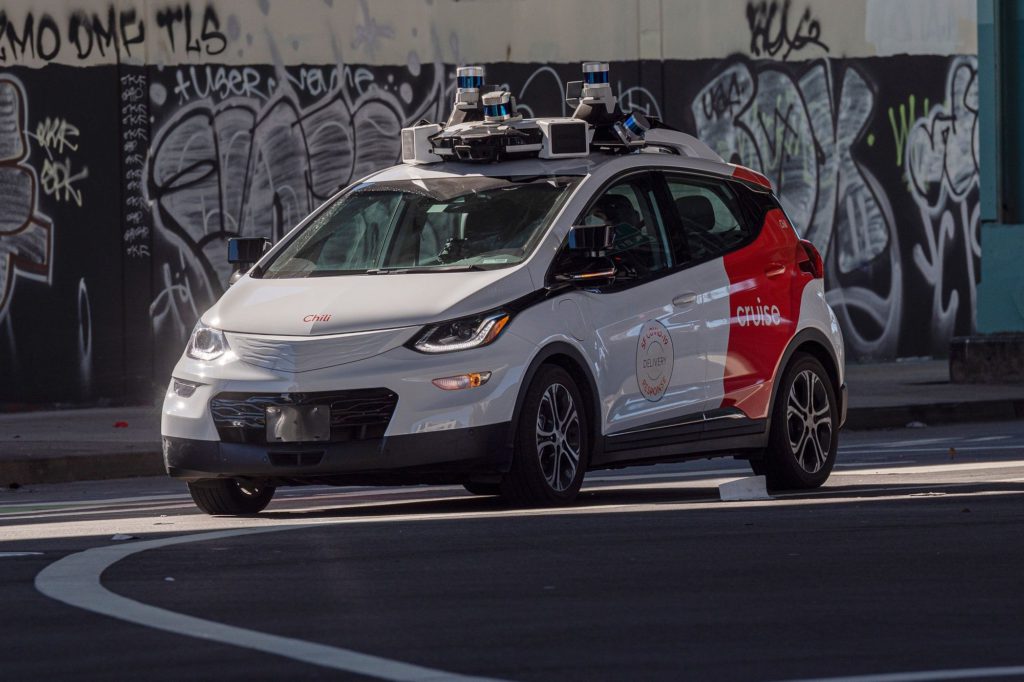The US National Highway Traffic Safety Administration opened a defect investigation into the autonomous-driving system used by General Motors Co.’s Cruise LLC after three crashes and multiple reports of its cars being immobilized on the road.
(Bloomberg) — The US National Highway Traffic Safety Administration opened a defect investigation into the autonomous-driving system used by General Motors Co.’s Cruise LLC after three crashes and multiple reports of its cars being immobilized on the road.
The agency’s preliminary evaluation pertains to an estimated 242 vehicles, according to a document posted Friday. The three collisions followed hard-braking incidents in which Cruise cars were rear-ended. NHTSA said it’s unknown how many times the company’s vehicles have become disabled on streets.
“Although the two types of incidents appear to be distinct, they each result in the Cruise vehicles becoming unexpected roadway obstacles,” the agency said. “This may introduce multiple potential hazards such as a collision with a Cruise vehicle, risk to a stranded passenger exiting an immobilized Cruise vehicle, or obstruction of other traffic including emergency vehicles.”
The investigation is the latest in a series of probes by NHTSA into automated-driving systems. The agency has spent more than a year looking into how Tesla Inc.’s Autopilot handles crash scenes involving first responders and opened defect investigations into sudden braking by Tesla, Nissan Motor Co. and Honda Motor Co. cars.
Unique Probe Aspect
What makes NHTSA’s investigation of Cruise’s system unique is the company’s driving system is capable of higher-level autonomy. The company started testing out driverless rides with employees on board in San Francisco two years ago and opened its cars up to the public in February.
Read more: Self-Driving Survivors Struggle With ‘Trough of Disillusionment’
Cruise announced just this week that it will expand its service across San Francisco, and said in September that it planned to launch before year-end in Phoenix and Austin, Texas. The business is a big part of GM Chief Executive Officer Mary Barra’s goal to double revenue by 2030. The startup majority-owned by GM has a goal to reach $1 billion revenue in 2025 and $50 billion by the end of the decade.
GM shares pared a decline of as much as 4.6% to trade down 4.1% to $36.07 as of 12:57 p.m. New York time. The stock has declined about 39% this year.
In all three of the hard-braking crashes, Cruise’s vehicles were operating under the supervision of a human in the car. The company’s autonomous system was responding to aggressive or erratic human drivers in other vehicles and were trying to minimize collision severity and risk of harm, said Drew Pusateri, a company spokesman.
Stranding Risk
In instances where Cruise’s cars have a tough time navigating their way around, the vehicles turn on their hazard lights and pull over. NHTSA said it will look into the potential for the cars to strand passengers in unsafe locations or endanger other drivers.
“These immobilizations may increase the risk to exiting passengers,” the agency said. “Further, immobilization may cause other road users to make abrupt or unsafe maneuvers to avoid colliding with the immobilized Cruise vehicle, by, for example, diverting into oncoming lanes of traffic or into bike lanes.”
Cruise cars shut down an intersection in San Francisco in June for more than an hour before company personnel could get to the scene and move them. Its board of directors — which is controlled by top GM executives including Barra — took notice along with NHTSA and local authorities.
Related: GM’s Cruise Scrutinized After Its Robocars Crash, Jam Traffic
Cruise said it plans to stay the course with its expansion, and that its technology is safe for the road.
“Cruise’s safety record is publicly reported and includes having driven nearly 700,000 fully autonomous miles in an extremely complex urban environment with zero life-threatening injuries or fatalities,” Pusateri said in a statement. “This is against the backdrop of over 40,000 deaths each year on American roads.”
(Updates with more detail from NHTSA’s document in the third paragraph.)
More stories like this are available on bloomberg.com
©2022 Bloomberg L.P.











